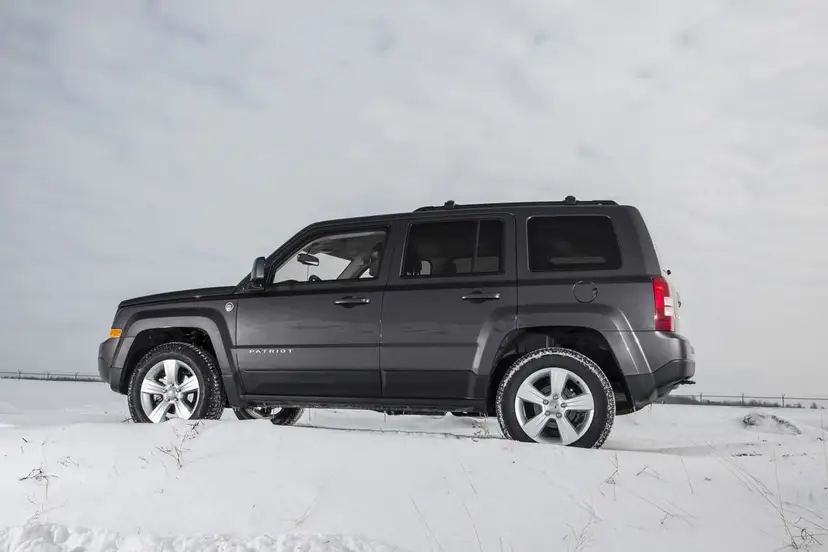
Editor’s note: This review was written in November 2012 about the 2013 Chrysler 200. Little of substance has changed with this year’s model. To see what’s new for 2014, click here, or check out a side-by-side comparison of the two model years.
Due to their body style, convertibles have an inherent Achilles’ heel — or in this case, roof. Structural rigidity is typically sacrificed so the top can go down, which can make for a lumpy ride and sloppy handling.
A much-needed suspension update gives the soft-top version of the 2013 Chrysler 200 convertible a more solid ride and less sloppy handling, though some of these classic shortcomings linger.
And there’s a catch: While the 200 convertible comes in both soft-top and retractable-hardtop versions, only the soft-top gets the update. The hardtop carries over unchanged for 2013, as does the sedan. (The Chrysler 200 is the only non-luxury midsize car available as both a sedan and a convertible.) Click here to read my review of the 2012 hardtop convertible, and here to see the model years and body styles compared.
Grazie, Italy
For the suspension retune, we have Italy to thank — specifically Fiat. Last summer, Chrysler’s parent imported the 200 convertible to Europe under the upscale Lancia brand and rebadged it the Flavia.
We know what you’re thinking: The 200 as a luxury car at a premium price? It could only work if some serious issues were addressed, and tops on the list was retuning the convertible’s suspension.
For 2013, engineers updated a laundry list of components, including firmer springs and stabilizer bars, revised shock damping, and additional rebound springs and jounce bumpers.
All that looks good on paper, but how does it feel?
Improvements
The ride is noticeably improved, but the previous model years had set the bar pretty low: Composure was a major problem in the 2012 version we tested; even the smallest pavement imperfections unsettled it. The 2013 soft-top has improved road-holding skills. It feels more stable and exhibits more body control.
There’s still some floatiness at highway speeds, but the car feels more planted. Bump absorption is better, but not great. Body flex is still a consistent unwanted passenger, and too much of the road continues to find its way into the car. Most bumps quiver through the cabin, and larger ones still induce some bounding and thumping motions. Overall, the feel is still on the lumpy side.
Handling is where the updates are most noticeable: The 200 feels more confident and responsive, especially in turns. Corners are flatter, and there isn’t as much body lean, making for tighter, tidier maneuvers. This ups the fun-factor, too. Slinging it around turns was surprisingly pleasant.
Carryovers
The soft-top weighs about 100 pounds less than the hardtop, but that doesn’t noticeably affect powertrain performance. The 283-horsepower, 3.6-liter V-6 isn’t exactly exciting, but it never feels slow. Power builds steadily thanks to a cooperative six-speed automatic. We have yet to test the 173-hp, 2.4-liter four-cylinder, but we don’t have high hopes because of the car’s weight.
The cabin again stands out thanks to materials, with a quality look and feel. Design-wise, however, the interior could use some spice. Our test car was dressed in a tan and black leather palette — bland compared with the black-and-white pattern worn by last year’s hardtop. The seats started off feeling cushy and supportive, but morphed into unsupportive mush after one editor’s several-hundred-mile trip.
The soft-top’s passenger room is a mixed bag. Front occupants lose a touch of headroom compared with hardtop versions (38.7 versus 39 inches). On the flip side, the soft-top offers nearly an extra inch of headroom in the back.
When closing the trunk, the soft-top feels just as clunky as the hardtop, and your luggage won’t notice a difference either: It’ll be just as smashed into the trunk, especially when the top is down. There’s just 7.0 cubic feet of trunk space with the top stowed, the same amount you’ll get in the hardtop. Top up, space is decent in both. The trunk has 13.3 cubic feet of room, only slightly less than the sedan (13.6 cubic feet).
Safety
In Insurance Institute for Highway Safety testing, the convertible earned the institute’s top rating, Good, in front-, side- and rear-impact tests; roof-strength tests have not been performed. The National Highway Traffic Safety Administration tested only the 200 sedan. Convertibles don’t share the crash characteristics of their coupe and sedan siblings.
The 200 convertible comes standard with front and side airbags up front. There are no side-impact or curtain airbags for the rear seats. Again for 2013, a backup camera isn’t available, with or without the optional touch-screen navigation system. Click here for a full list of safety features.
Visibility could be better. It’s OK to the rear corners, but the small back window narrows the view. Forward, the windshield is shorter than normal because of the convertible top, which also compromises the view.
200 in the Market
The changes may seem minor, but they make the 200 more competent and compelling. The price increase is minor, too. The 2013 Chrysler 200 convertible starts at $28,095, including a $995 destination charge. That’s just under $300 more than the 2012 model.
Shoppers looking for an affordable midsize convertible don’t have many choices. Competitors include the Ford Mustang, Chevrolet Camaro and Volkswagen Eos, so small changes like those in the 200 make a big impact in this class.
Chrysler’s improvements for 2013 make this a better car, but it’s disappointing that the changes took so long and affect only one version.













































